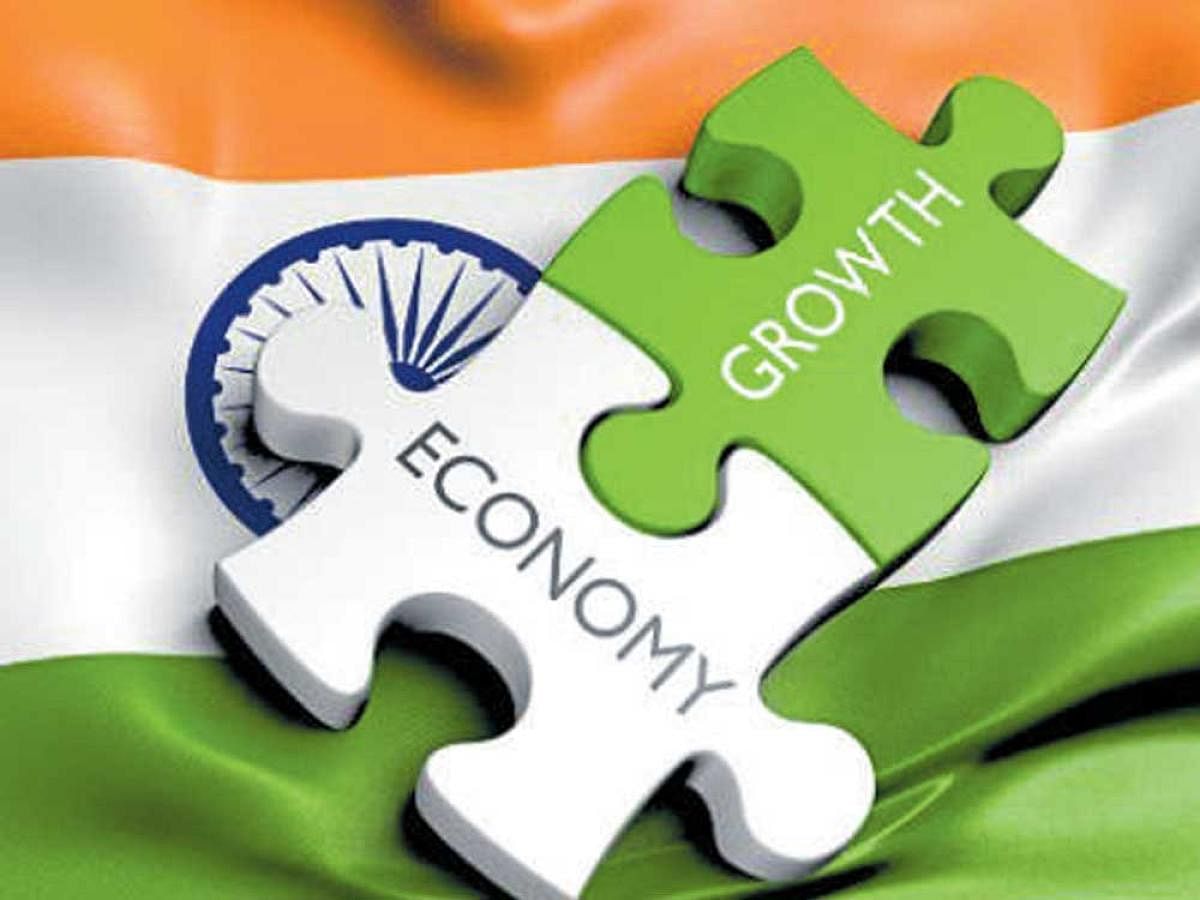
The latest World Bank GDP figures show India as the sixth largest economy with $2.597 trillion, pushing France down to the seventh position. It’s not a surprise given that India is the fastest growing large economy in the world, though growth was slowed down by two big disruptions — demonetisation and teething problems in GST implementation.
If we go by the forecasts, including the one by IMF, India would be growing at around 8% or more for the next decade, overtaking Britain, Germany and Japan sequentially by 2030. In fact, India could overtake Japan before 2030 if it clocks a consistent growth rate of 8-9% growth rate for the next 10 years. Now, the question is, how to get there?
The biggest strength of the economy is its favourable demographic composition. India is largest young nation, having a working age population of 877 million. That age group — 15-64 years — is expected to rise over the next couple of decades, whereas all other big economies, including China, will have high and growing dependency rates. As per United Nation’s projection, the average age in India will be just 29 years in 2020, in contrast to average age of 37 years in China and the US, 45 years in Western Europe and 48 years in Japan. The mean age in India will just cross 30 by 2025 and will stay at around 35 until 2040. According to IMF, India can improve its growth rate by upto 2% annually, if the demographic dividend is harnessed appropriately.
India is also home to around 125 million English-speaking people, a number that is expected to quadruple in the next decade. India has benefitted from outsourcing and globalisation, and many MNCs have not only outsourced labour and manufacturing to India but also marketing, managerial and customer service jobs.
It’s not surprising that the services sector attracted the highest FDI inflow of $6.71 billion, followed by telecoms ($6.21 billion) and computer software and hardware ($6.15 billion) in 2017-18. So, there is enough scope for the service sector growth to continue due to skilled manpower, provided we design the right policies and skill development programmes. The rising per capita income and middle class will create a mass market and contribute to savings, investment and to the growth momentum. Urbanisation is going to be another engine of growth, as urban population is expected to touch 843 million by 2050.
Labour reforms
However, the growth potential through demographic dividend depends upon shifting the labour force from agriculture. Currently, 49% of the total labour force is engaged in agriculture, but contributing less than 14% to GDP. Therefore, the need of the hour is skilling large numbers of young people to benefit from the changing market and production structure. India can be the hub for other countries to outsource work and manufacturing to, provided we improves our education system, imparting the right training and skills to the labour force.
In this context, the ‘Kaushal Bharat, Kushal Bharat’ programme, which plans to train 400 million citizens by 2022, is a welcome initiative. It includes various programmes, such as Pradhan Mantri Kaushal Vikas Yojana, National Policy for Skill Development and Entrepreneurship 2015, Skill Loan Scheme, and the National Skill Development Mission. These programmes need sufficient resources, effective implementation and proper monitoring. A large chunk of the labour force, with little skills and training, can only be absorbed in labour-intensive manufacturing.
However, there are a plethora of labour regulations in India which are complex, rigid, time-consuming and perceived as biased against employers. It’s time to move ahead with the proposal to merge 44 existing labour laws into four codes — on industrial relations, wages, social security and industrial safety and welfare -- for rationalisation at the central level.
A labour force participation rate of only 54% is mainly due to the stagnant industrial sector, particularly manufacturing. The industrial sector showed a year-on-year growth of only 6.4% in 2016. Due to lack of proper infrastructure, investment and innovation, the manufacturing sector’s share in GDP, around 16%, has been stagnant for many years, leading to lack of job opportunities for existing semi-skilled or literate workforce and hindering new people entering the job market.
Another worry for the economy of late is the slowdown in private investment, particularly in manufacturing. The twin balance-sheet problem is the main reason for lack of appetite and ability to invest anew. However, there are signs of investment recovery and revival of stalled projects facilitated through the Insolvency and Bankruptcy Code (IBC).
IBC offers an efficient and time-bound way to resolve the risk of outstanding debts created by the corporate sector. Before the code, the average time taken to resolve a soured account was 4.3 years and lenders only recovered an average of 26.4 cents to the dollar.
According to IBC bulletin January-March, the recovered amount was Rs. 3,070 crore, out of the claim amount of Rs. 4,405 crore in 12 cases, with average recovery rate of 69.7%. A total of 525 corporates were undergoing Insolvency Resolution Process (IRP) at the end of March 2018. Therefore, it is hoped that an effective IBC will help revive investment and also prompt borrowers to pay their debt on time. Though private investment is still weak in India, the World Bank has said it is expected to grow by 8.8% in FY19 to overtake private consumption growth of 7.4%, and thereby drive GDP growth up.
India’s macro fundamentals are strong, with forex of $422.53 billion. The potential to grow is huge, which is recognised by foreign investors, who have pumped in some $60 billion into the country in the last couple of years. What we need to do is ensure productive use of India’s human resources.
--
(The writer is Professor, Institute of Economic Growth (IEG), Delhi)